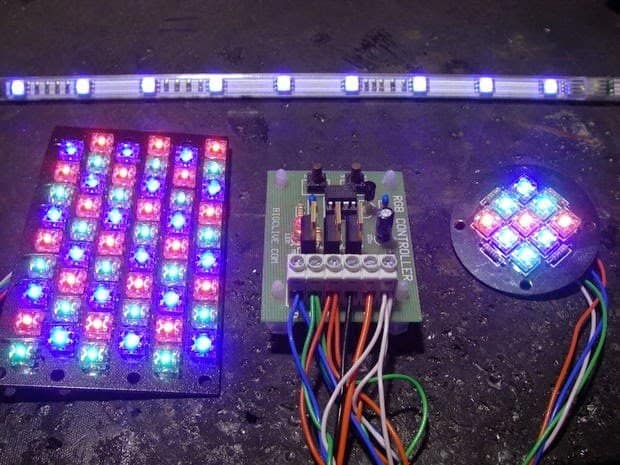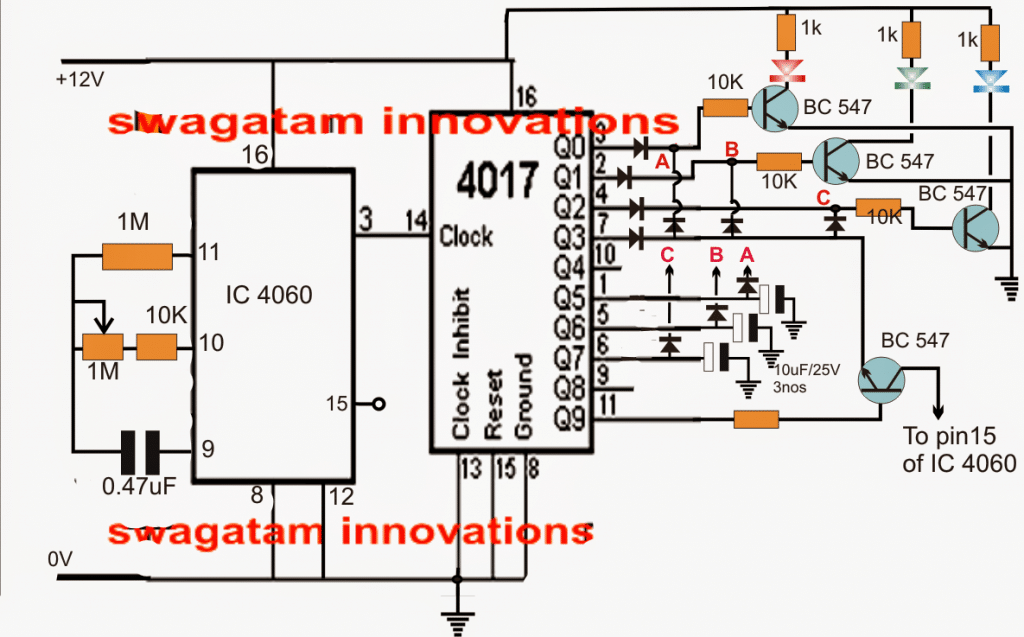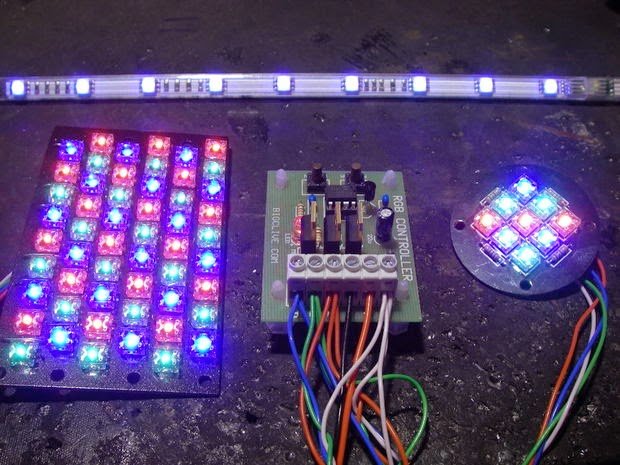In this post I have explained how to make a simple RGB (Red, Green, Blue) LED controller circuit which may be designated to flash a group of RGB LEDs with a particular sequencing pattern. The idea was requested by Mr. Navdeep.
Technical Specifications
I want to make a display board with red, green and blue leds. Approximately 350 each. and i want to use 12 volts rgb controller. please suggest how should i connect LEDs.
I want to light red, green and blue leds separately and then in combinations. And how to make circuit. please also suggest which rgb controller should be used and how it should be connected.
can u suggest a simple circuit for 12 volt 3 amp each, red green blue, rgb controller. with primary colours only.

This is the photo of circuit i got from internet. but am not able to understand how to make it help please. please suggest a simple circuit using easily available components. for RGB controller.
The sequence pattern will be: red first, then green, then blue, then red green together. or any order and any combination will do. i just need it for making a led display board. only wish is that leds should light in sequence and combinations.

The Design
AS per the suggested sequence format, a simple design using a 4017 IC and a 4060 IC can be used for implementing the proposed RGB LED controller circuit.
Referring to the shown diagram, the 4017 IC and the 4060 IC are wired in a standard LED chaser mode, which is also quite popular with the name "Knight Rider" due to its specific running and chasing light effects.
The IC 4060 supplies the clock pulses to the IC 4017 for executing the intended the sequencing of its output pins in response to every clock pulse at its pin14.
However here the output of the 4017 IC is configured a bit differently for implementing a unique RGB flashing pattern.
Here, the red, green blue strings are wired in a special way to achieve the mentioned desired sequencing pattern, that is when switched ON the R, G. B strings first light up in sequence (in a "chasing" like pattern), next all the three strings get illuminated together and shut off, following this next up the three strings light up one after the other without shutting off in the process, and finally the three LED light up together but flash rapidly to finish the sequence.
The cycle then resets and goes back to the initial phase as described in the above explanation.
The 1M pot may be adjusted for getting the desired control and sequencing rate on the RGB LEDs.
